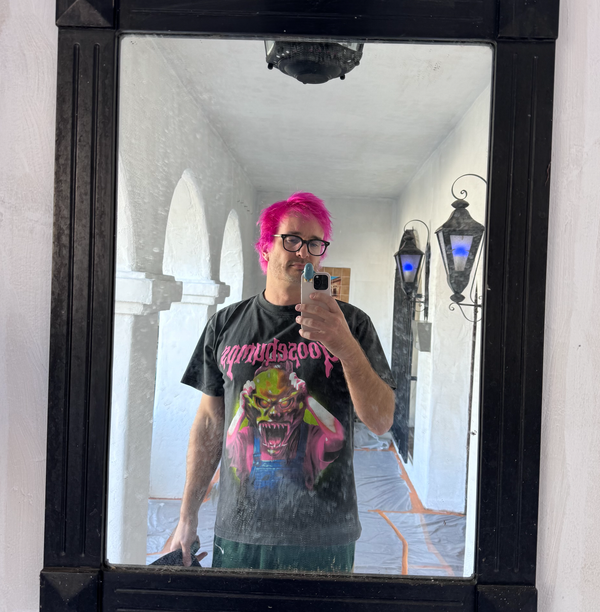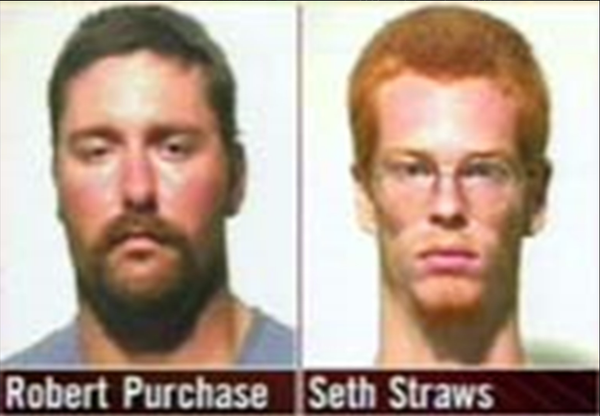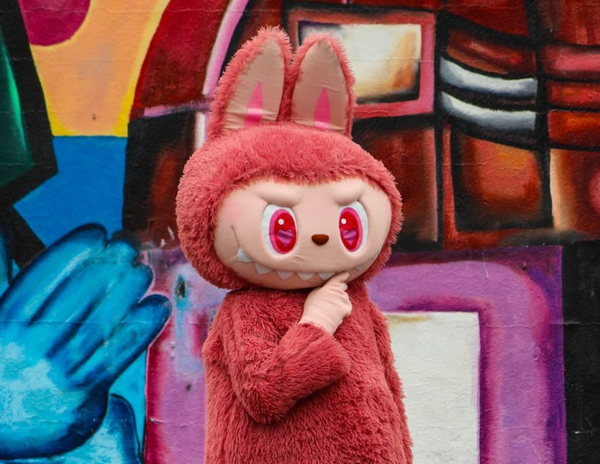Why the TikTok Ban Was Just a Stunt
And how it will endear the US to an administration that has vowed to begin mass deportations on Tuesday.
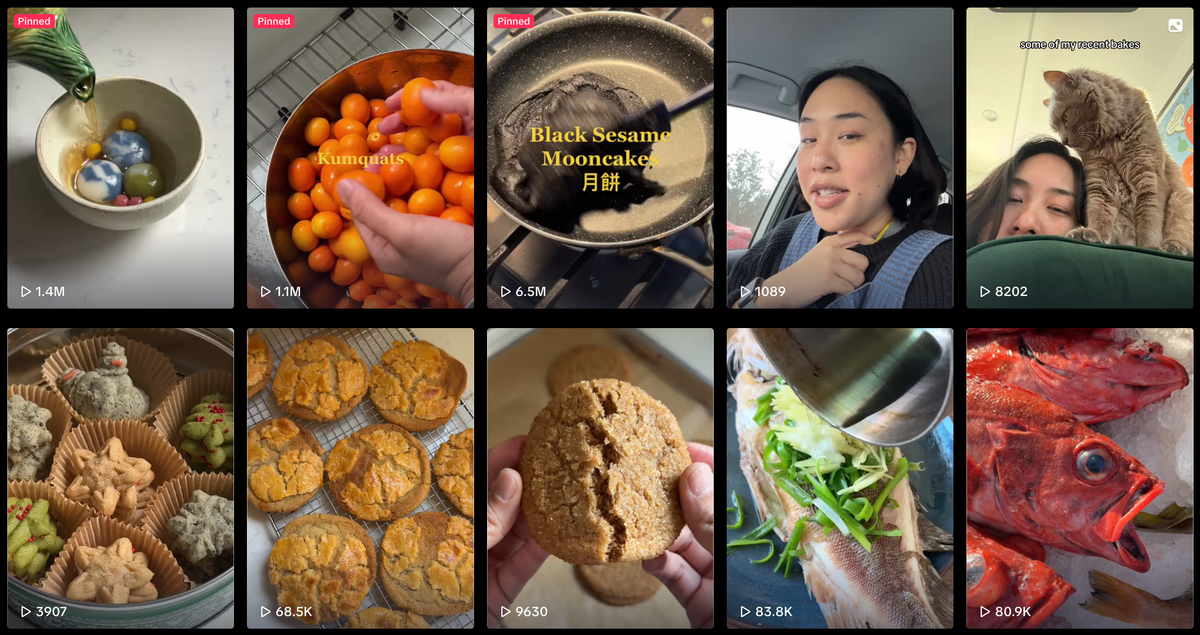
Hi,
Last night one of the world’s biggest social media platforms, TikTok, became inaccessible in the United States.
Then, today, it came back online.
Why should we care about a social network that deals in dance trends and cute babies? Well — TikTok represents a lot more than that.
And its ban and subsequent reinstatement says a lot about how fucked up the next four years are going to be under Donald Trump, whose inauguration takes place tomorrow.
Today I am handing Webworm over to one of the smartest people I know. Rachel Lo is a former engineer with a background in tech, knows TikTok like the back of her hand, and understands what the hell is going on here in America right now.
And why we should be worried.
David.
Webworm is a fully reader-supported publication with zero ads & no big backers. If you think what I do is important, and you haven’t already, please consider becoming a paid supporter.
Whiplash: Why the TikTok Ban Was Just a Stunt
by Rachel Lo

In the summer of 2020, despite just entering into a years-long pandemic, I was a starry-eyed tech girlie busy working on building an app I thought the world needed. It was an astrology-based dating app called ‘Struck’, designed to force real conversations between users under the guise of astrology. But I had one major problem — with the world suddenly shut down, I had no way of getting the app out into the real world.
I extremely reluctantly downloaded TikTok, an app I had been hearing more rumblings about since the pandemic started despite its official launch in 2016. The first time I opened TikTok I can viscerally remember how overwhelmed I felt. I was immediately dropped into a feed of videos that would play automatically — I got overstimulated and immediately closed the app.
Eventually, I began posting cooking videos on a “burner” account to learn how the app and its renowned algorithm worked. The more I consumed, the more my algorithm came to know me, sometimes with an acuity that scared me. My dumb cooking videos started to take off, too, so I transitioned my knowledge back to my app and used TikTok and its algorithm to push Struck into the top 10 section of the App Store, amassing over 100,000 downloads in a matter of days.
Eventually, when I realized that the clear appetite for my app, which was designed to alienate douchebags, would never appeal to Silicon Valley’s venture capital class (the very men who drove me to design my own dating app after years of tormented dating experiences), I shut it down.
But I continued on with my cooking videos.
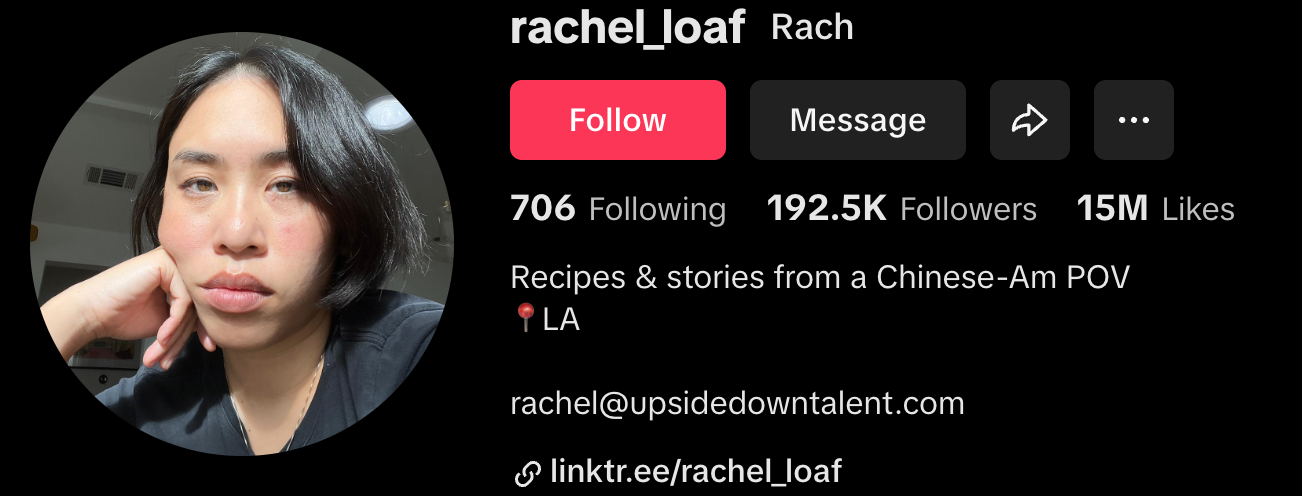
It wasn’t something that came naturally to me, but at some point the relative anonymity of TikTok and the way it built communities according to interests and not physical proximity became a place of refuge. I found people who shared experiences with me that I had long filed away as weird, boring, or not important.
I laughed at silly little dances performed by round-faced toddlers. I learned to embrace my identity as a Chinese-American woman. I became more educated about racial politics directly from people of color. I met real people who became real friends in real life. I slowly stripped back the veil of the American dream and all the ways in which it’s created unimaginable strife for a huge swath of not just our own country, but countries around the world.
At the same time, TikTok became a source of income for me, and with almost 200,000 followers on the platform (a number seen as not-that-big by the chronically online), I was largely able to leave my corporate career behind. I wasn’t the only one — TikTok’s US userbase grew to over 170 million and it’s estimated that the business was generating over $1B per month.
It wasn’t all good: I often felt like I was doom scrolling and would find myself turning to TikTok in moments where I needed respite, which became progressively more frequent as the world quite literally burned down around me. Lots of users shared similar complaints about TikTok. And its role in last year’s presidential election — good or bad — will probably continue to be dissected for years to come.
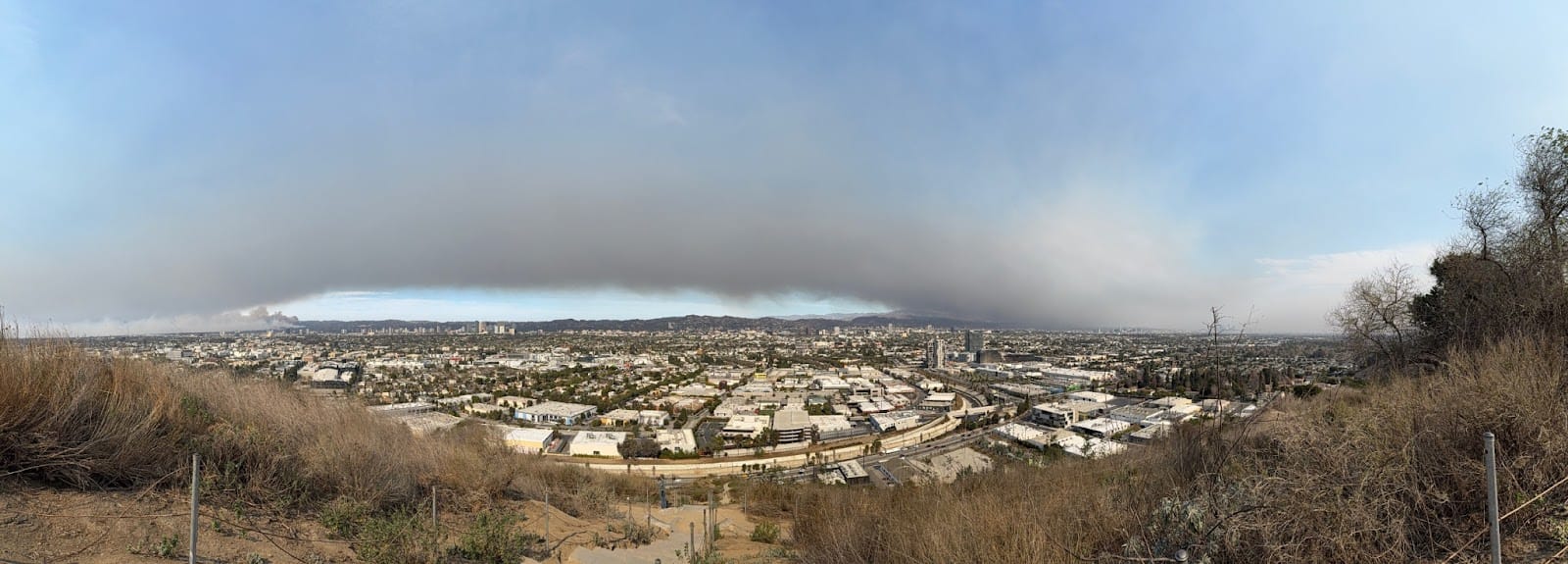
Still, TikTok felt like a place for learning valuable information unlike the slop shoveled on Meta’s platforms, even if sometimes at the expense of touching grass. Plus, as someone who relies on social media for income, TikTok’s creator fund regularly paid me 10 to 20 times more than Instagram — an amount that I always found funny, though not surprising, given Meta’s massive size, revenue, and stock price.
After slowly waking up from the literal and figurative haze of one of the worst natural disasters in LA’s history, I began to hear news about the Supreme Court’s ruling on the TikTok ban, passed by President Biden about 10 months prior. People postulated about whether or not the ban would actually happen this time — after all, we had been down this path many times before.
My personal outlook was that it was unlikely. I had worked in tech long enough and had watched Trump’s election with a special focus on Peter Thiel’s quiet puppetry to know that tech companies operate with near impunity in this country. I couldn’t imagine the US government letting the estimated 7 million small businesses that rely on TikTok to suddenly go up in smoke, especially when the “health of the economy” generally takes precedence over other things like the health of its citizens.
Still, things seemed to really spiral over the course of the week starting on around January 12th. That was the first time I saw a TikTok creator advocating for others to join a popular Chinese social media app called Xiaohongshu or “Red Note” to spite American legislators as the Supreme Court was deliberating the banning of TikTok.
TikTok users flocked en masse to Xiaohongshu, eventually pushing it to become the top downloaded social media app in Apple’s App Store by January 13.
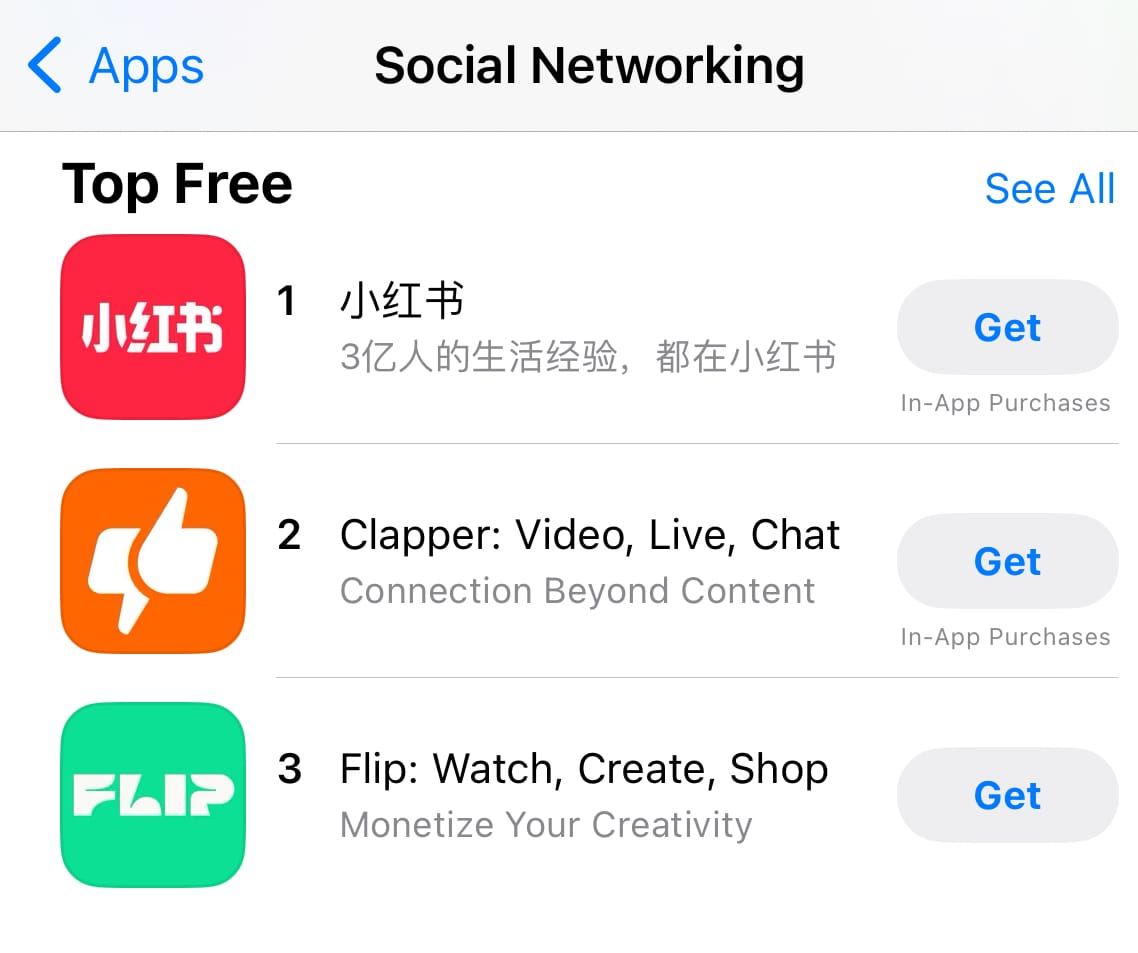
Users joked about learning Mandarin and even moving to China. Videos were posted about the “cultural exchange” happening between American and Chinese citizens, with Chinese users allegedly asking whether Americans “really have to pay for an ambulance when they’re injured, or whether that’s just Chinese propaganda”. Though not totally clear which, if any, of these were legitimate stories, I found them equal parts amusing and depressing.
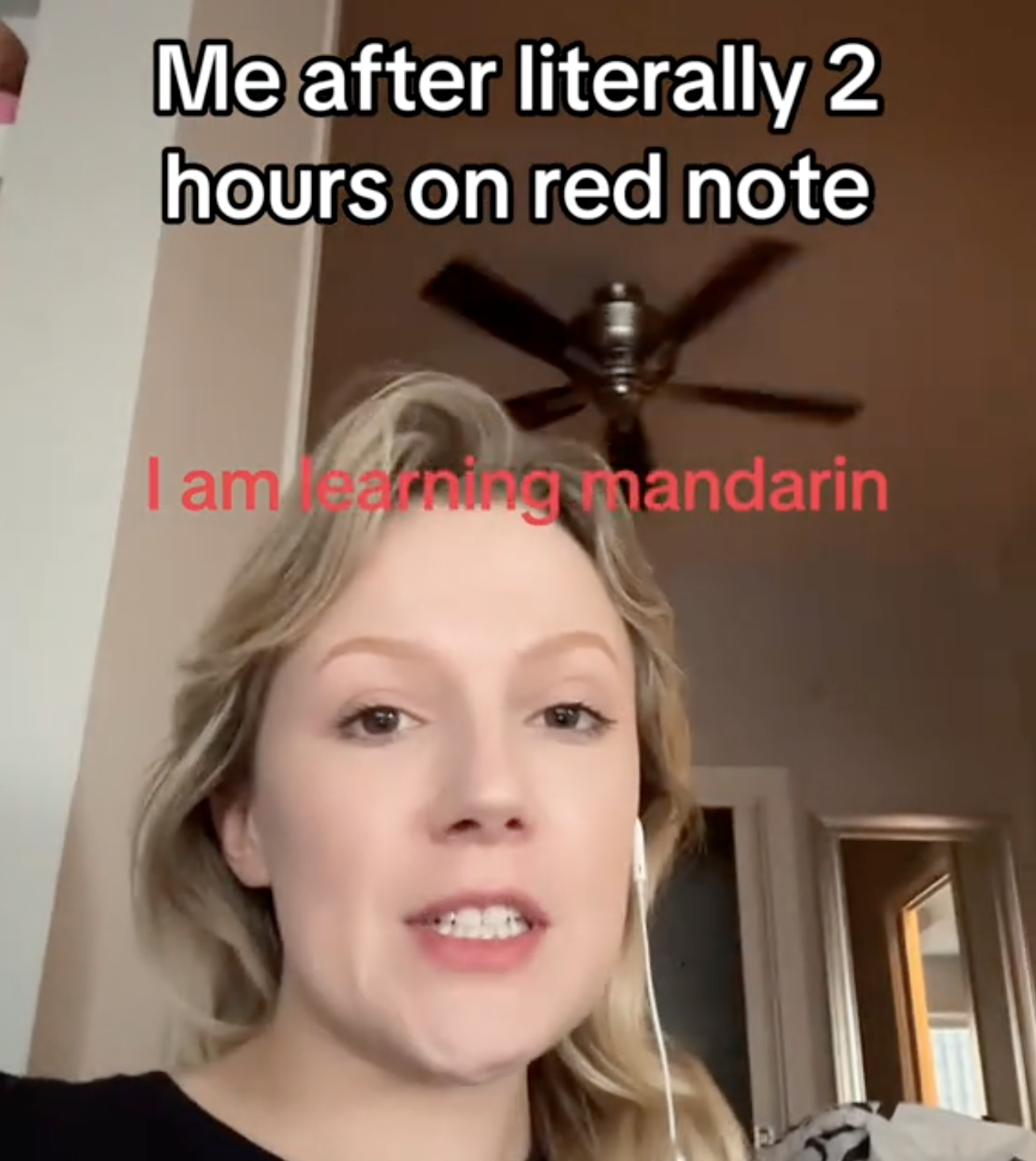
Creators shared tips on how to save all your past content in case the app when dark, but I stubbornly refused, assuming the Supreme Court would overturn the ruling or that Biden or Trump would finally give up the act. A trend emerged where, since people were beginning to assume the app would go dark, creators would share a secret they had kept from their followers ranging from silly to scandalous. People, including myself, shared heartfelt thank you’s for all the things the social media app had afforded them.
Conspiracy theories popped up about Meta merging with TikTok, but the evidence to support this idea felt thin. Jimmy Donaldson — AKA MrBeast — posted a series of vague tweets about how he was working with billionaires to acquire the app. President Biden said he would push the decision to Trump’s administration. Trump signaled that he would let the app live on.

Then came the waiting.
On the Friday before the ban, the Supreme Court released its ruling that would uphold the ban of the app on the same Sunday (today).
Later that day, TikTok posted a video to its own platform of CEO Shou Chew praising President Trump for his support of the app. TikTok users began pointing to a video reposted by Shou Chew’s own TikTok account of Charlie Kirk in Greenland (one of President Trump’s annexation targets). Users were divided: was Chew becoming an evil Republican in real time? Was he just playing the game?
Shortly thereafter, TikTok released this very confusing statement appearing to contradict Chew’s video:
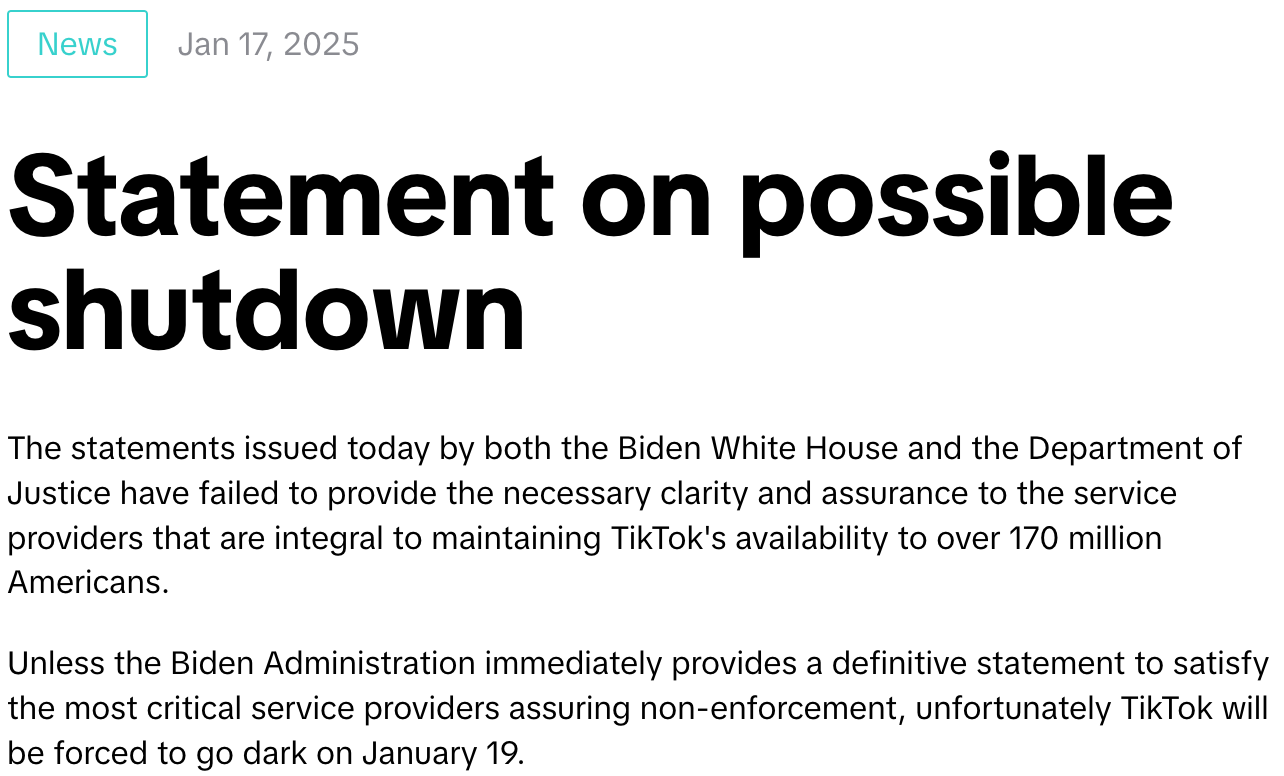
Heading into Saturday, the day before the ban was supposed to go into effect, I started to take the threat of TikTok going away more seriously. Here’s a timeline of my afternoon, which was rife with frantic texts back and forth between myself and friends — some creators themselves, others just enthusiasts:
The chronically online TikTok user’s timeline
(Pacific Time, all times approximate)
January 18
2:30 PM — A video goes viral saying that TikTok has sent an email to the agencies that it works with directly, warning that the app will go dark starting at 5:30PM PT.

3:45 PM — I suddenly decide it’s finally the right time to back up all of my videos and frantically set out to do that before 5:30 (I end up being too late and can only back up about ⅔ of my videos).
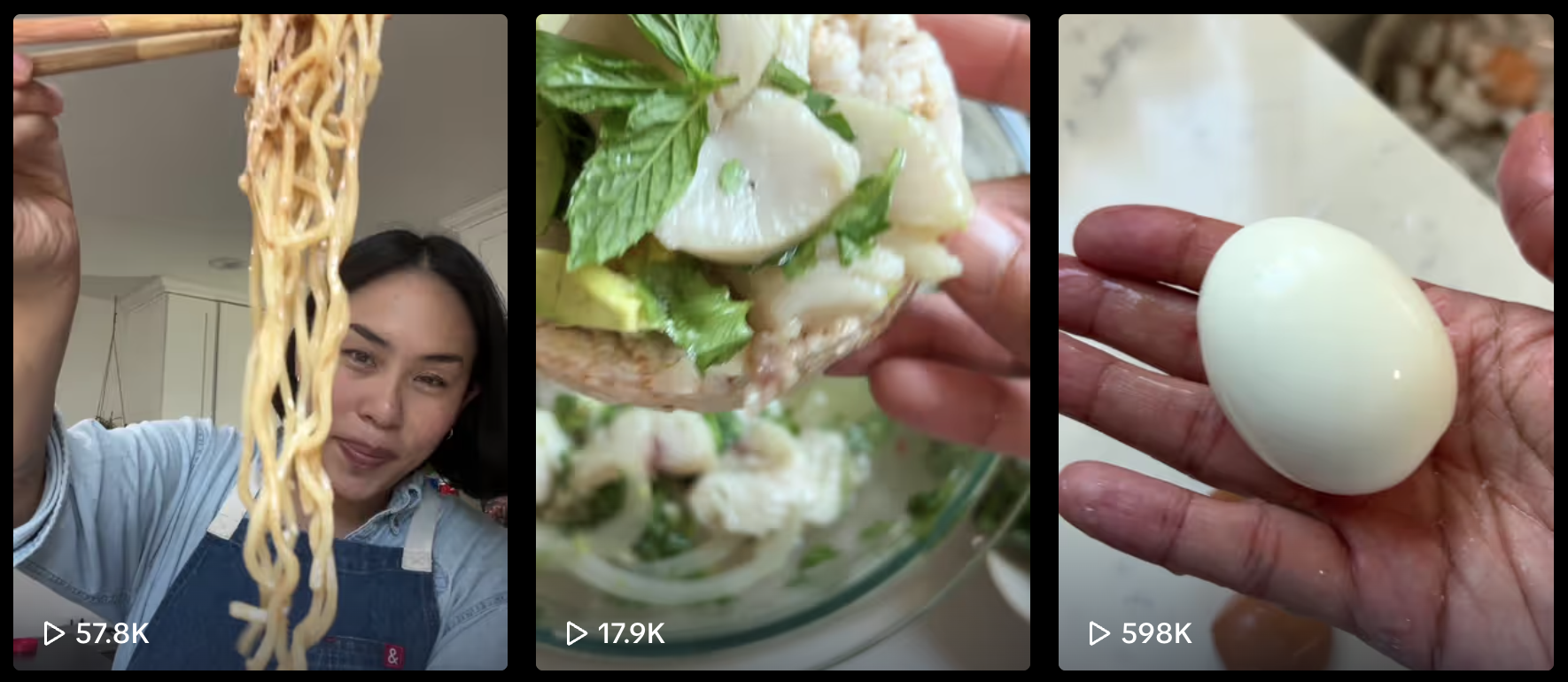
5:00 PM — Another email goes out to the same group of people affiliated with agencies saying that someone had erroneously sent the previous email.
5:30 PM — The app is still usable.
5:50 PM — Users start to see a pop-up that says the ban will go into effect on January 19 “temporarily” and to “stay tuned”.
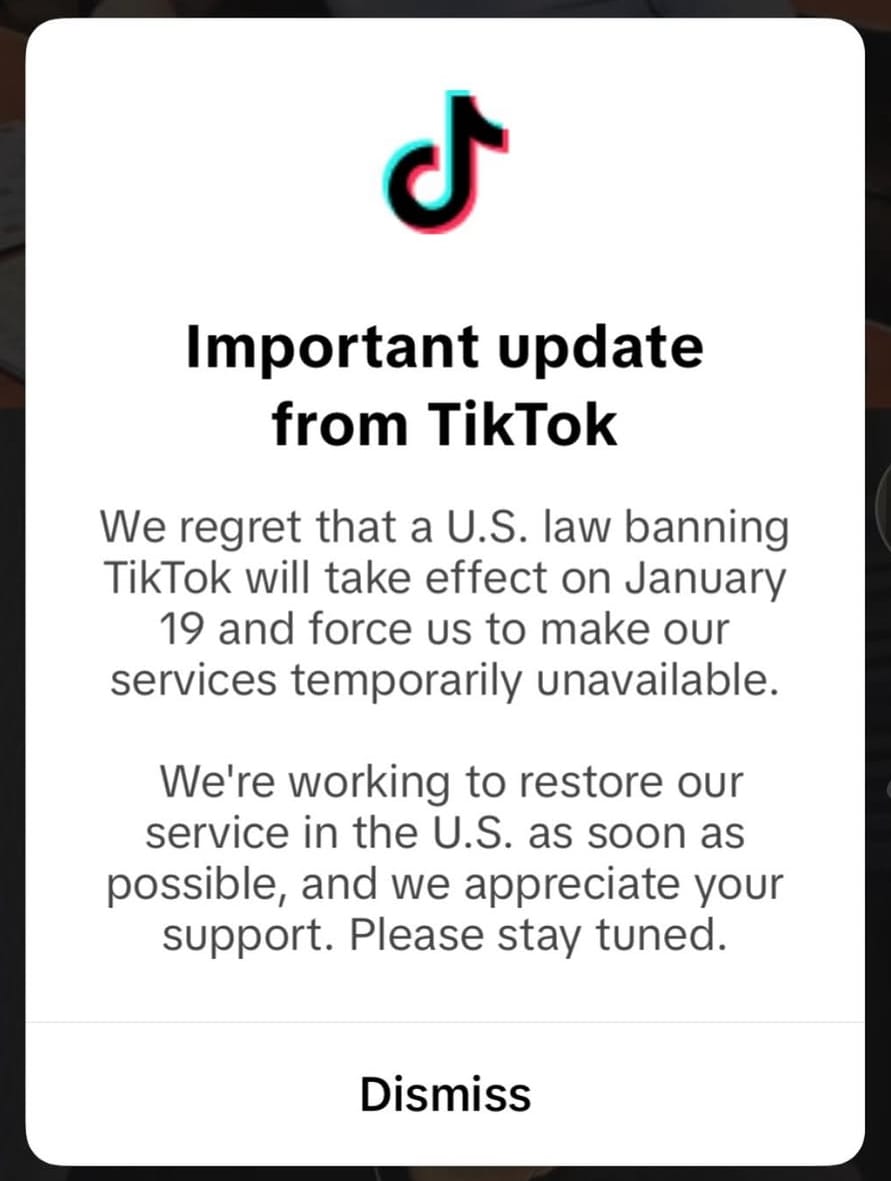
6:00 PM — Some users (including myself) start to notice the app getting a little buggy.
6:45 PM — Users lose the ability to share videos.
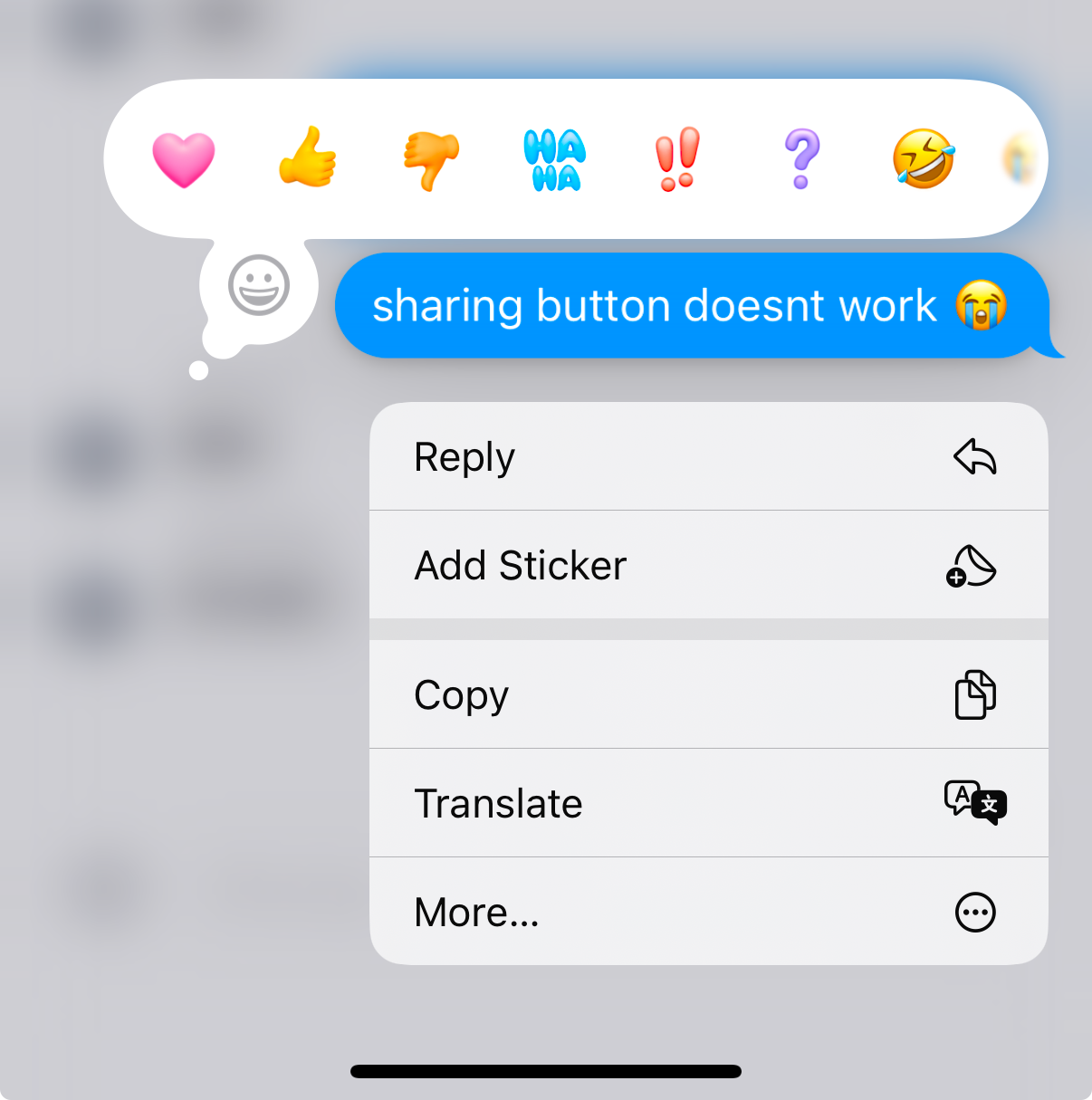
7:45 PM — My “Activity” page goes blank. Users start to see a pop-up that says “Sorry, TikTok isn’t available right now” and forces users to close the app.
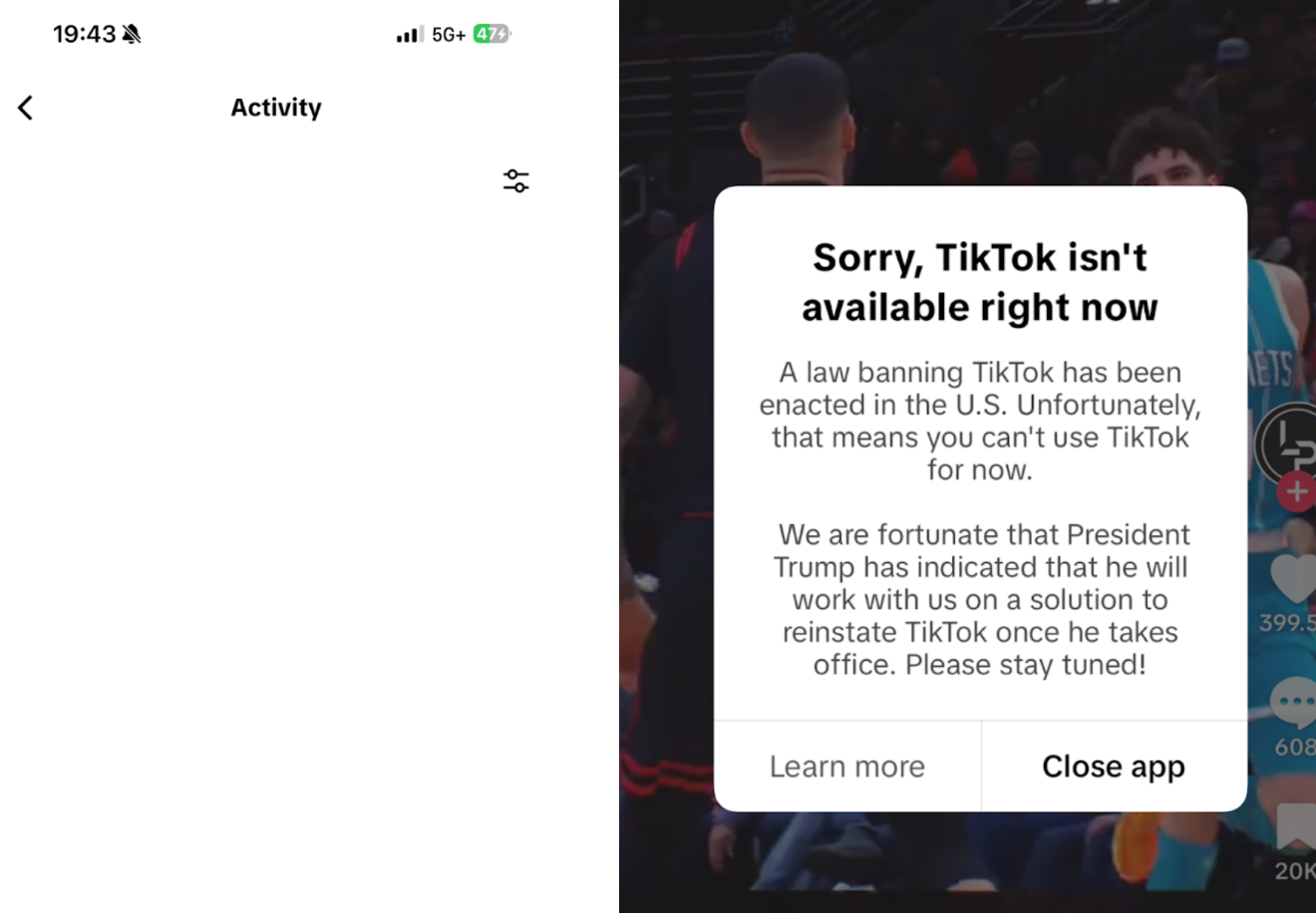
January 19
9:45 AM — Some users report that they can use the app again, with a new pop-up that gives another shout out to President Trump.
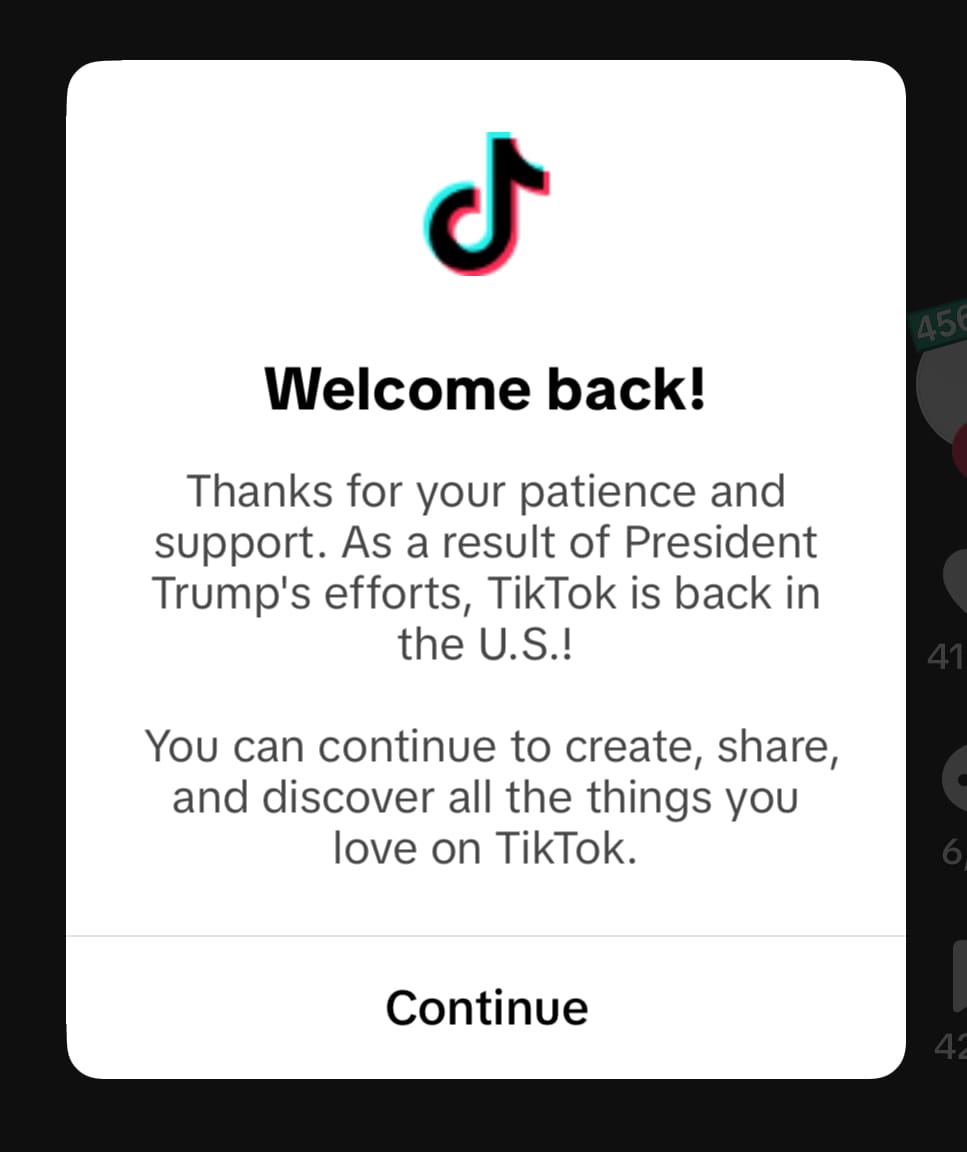
What Does This All Mean?
I’m generally happy that the app is back. But I think you’re kidding yourself if you think it’s going to be the same app we’ve enjoyed for the last 4+ years.
Many have pointed out the interesting coincidence in timing between the genocide in Gaza, its residents streaming atrocities directly to American citizens, and the renewed interest in the TikTok ban in 2024.
The dust from this flurry over the past week hasn’t settled yet, but a few things are becoming clearer. Tech companies do, in fact, operate with some sense of impunity, though it seems the price of this impunity has shifted a little bit and now includes total deference to the president. TikTok is likely here to stay, but it’s unclear how the app and its algorithm will be changing heading into the new administration.
Shou Chew, like any tech CEO, is not your friend and cares much more about the bottom line than he does your politics or wellbeing.
We live in a technocratic oligarchy where the lines between the tech industry and our government are becoming ever more blurred. The last hours of the TikTok ban, at least in my eyes, were pure theater.
Based on the speed of events, this is what I think happened:
Trump and TikTok already came to an agreement well before the shutdown on Saturday evening. Trump agreed to keep TikTok around, likely with a slew of concessions we still don’t know about, and with the agreement that TikTok would shut the app down just long enough to make American users squirm. Hell, I even think the decision to shut the app down before midnight (which is when many expected it to go dark originally) was just to build drama.
Why? To make Trump the hero of course. What really makes my skin crawl is the last couple of pop-ups that were sent out to users. The language in those pop-ups to me reads comically - almost a caricature of how Americans imagine Chinese people talk about their government leaders.
It’s propaganda with the thinnest veil imaginable (extra ironic now in the shadow of the Xiaohongshu protest). To those who keep up with the news and politics, it’s almost laughable.
Here’s the full timeline of events, for those who have lost track (and I don’t blame you):
March 13, 2024
The US House of Representatives introduces a bill to ban the distribution of TikTok unless parent company ByteDance sells its stake to an American investor/owner.
April 24, 2024
President Joseph Robinette Biden signs the bill into law, vowing to ban the app if not sold in 12 months.
May 7, 2024
TikTok and ByteDance sue the US government.
August 2, 2024
The FTC and the DOJ sue TikTok/ByteDance.
November 5, 2024
Donald J. Trump is elected to the office of President of the United States — again — largely with the help of support drummed up by his team on…TikTok.
December 6, 2024
The Federal appeals court upholds the ban.
December 27, 2024
Trump asks for a pause on the ban.
January 12, 2025
I hear the first murmurings of people downloading a Chinese-owned app called Xiao Hong Shu, which, despite its euphemistic American translation Red Note, actually translates directly to “little red book”.
January 17, 2025
The Supreme Court upholds the ban.
January 18, 2025
TikTok goes dark.
January 19, 2025
TikTok comes back online.
But let’s not forget the actual starting point of this timeline — in August of 2020, it was Trump, not Biden, who first tried to force the sale of TikTok.
And the scary part is that there are a ton of Americans who don’t remember this.

They don’t think that this is just a funny little stunt.
They’ll see these statements and take them at face value.
They’ll accept, without question, that Trump saved their favorite little app from sure destruction.
And this whole stunt, as stupid as it now seems, will endear the country to the administration that has vowed to begin mass deportations on Tuesday.
-Rachel Lo

